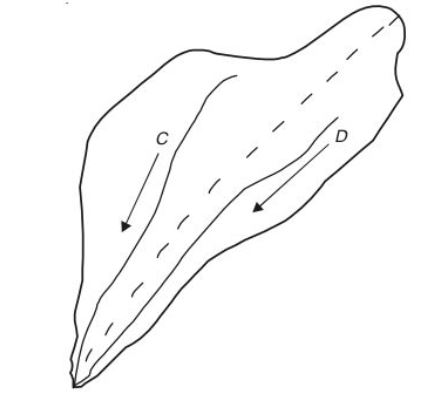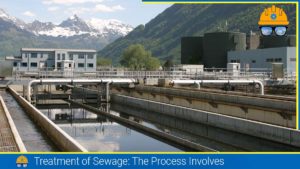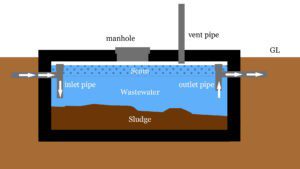Why should civil engineers know about the small catchment? Why is it so important to consider small catchments? Do you want to propose building a culvert or bridge? Keep reading to see why you need to know about the catchment and catchment area, and their type and calculation.
What is a Catchment?
The collection of runoff over the ground surface, especially the collection of rainfall over a natural drainage area is known as a catchment.
In general, rainfall varies in space and time. However, under certain circumstances, it is possible to assume the rainfall to be either,
- constant in both space and time
- constant in space but very in time
- varying in both space and time
The catchments scale helps to determine which one of these assumptions is justified on practical grounds.
The large catchments are those in which runoff can be modelled by assuming rainfall to vary in both space and time. Midsize catchments are those in which runoff can be modelled by assuming rainfall to be constant in space but varying in time. Thus, small catchments are those in which runoff can be modelled by assuming constant rainfall both in space and time.
Characteristics of Small Catchments
The characteristics of a small catchment can be stated as follows: –
- Rainfall is assumed to be uniformly distributed both in time and space.
- Storm duration generally exceeds the concentration time.
- Runoff is primarily by overland flow.
- Channel storage processes are negligible.
Analysis of Runoff Response
The following methods are used for the analysis of runoff response from small catchments: –
- Parametric approaches, such as the rational method, which lump all relevant hydrologic processes into a few descriptors like rainfall intensity and catchment area.
- Deterministic methods such as overland flow models.
Rational method
The rational method was introduced in the United States by Kuichling in 1886. Since then, it has become the most widely used method for the analysis of runoff response from small catchments. This method provides only the value of peak discharge. The peak discharge is primarily due to overland flow rather than stream flow. The following parameters are taken into account for the rational method: –
- Rainfall intensity
- Rainfall duration
- Rainfall frequency
- Catchment area
- Hydrologic abstractions
- Runoff concentration
- Runoff diffusion
The equation for the rational formula can be expressed as
Q=0.278CIA
Where, Q= peak discharge in cumecs, corresponding to a given rainfall intensity, duration and frequency
C=runoff coefficient, a dimensionless parameter that includes the abstraction and diffusive properties of the catchment
I=rainfall intensity in mm/h averaged in time and space
A=catchment area in sqkm
Runoff Concentration
Runoff concentration implies that the flow rate at the outlet will gradually increase until rainfall from the entire catchment has had time to travel to the outlet and is contributing to the flow at that point. At the time, the maximum or equilibrium, flow rate is reached, implying that the surface runoff has concentrated at the outlet.
Concentration Time
The time that is required for a parcel of water to travel from the farthest point of the divide to the catchment outlet is referred to as the time of concentration of the catchment.
Concentration time formulae
Most of the concentration-time formulae are empirical in nature and therefore have a somewhat limited application. A well-known formula relating the concentration time to slope and length parameters is the Kirpich formula, applicable to small agricultural watersheds with drainage areas of less than 80 hours. This formula is given by

Where t=concentration time in hours
L=lenght of the principal watercourse, from the outlet to divide, in km.
S=slope between the maximum and minimum elevations in m per m.
Another formula used for the estimation of concentration time is that of Hathaway

n is the roughness factor of the catchment surface and all other terms are the same as in the Kirpich formula. The applicable values of n for the Hathaway equation are given in Table 1.
| Types of surface | Value of n |
| Smooth impervious | 0.02 |
| Smooth bare picked soil | 0.10 |
| Grass, row crops or moderately rough bare soil | 0.20 |
| Pasture | 0.40 |
| Deciduous timber land, coniferous timberland or deciduous land with deep litter or grass | 0.80 |
Application of Rational Method
The drainage boundaries may be estimated from topographic maps or aerial photographs. The catchment area is calculated either by a planimeter or by some other suitable means. For the application of the rational formula, the primary requirement is that the catchment should be small. The drainage survey also includes:
- Land use and land use changes
- Percentage of imperviousness
- Characteristics of the soil and vegetative cover that may affect the runoff coefficient
- The general magnitude of ground slops and catchment gradient is necessary to determine the value of concentration time.
The concentration time of the catchment can be computed by one of the following methods:
- Using an empirical formula.
- Using a value of flow velocity based on hydraulic properties and then calculating the travel time through the catchment’s hydraulic length.
- Calculating the steady equilibrium flow velocity (using Manning equation) and then computing the associated travel time through the hydraulic length.
Since the rational method is applicable to concentrated and superconcentrated catchments, knowing the value of concentration time, the storm duration is made equal to the concentration time. Then. a rainfall frequency based on the importance of the project is chosen. Later, for the selected Strome duration and rainfall frequency, the value of rainfall intensity is obtained from the appropriate IDF (intensity-duration-frequency) curve.
Once the values of rainfall intensity and catchment area have been arrived at, an appropriate runoff coefficient can be selected from Tabel- 2 and finally the value of peak flow can be computed.

Composite Catchments
A composite catchment is one that produces its peak flow on account of the contribution from two or more adjacent subareas of widely differing characteristics.

Consider that a catchment has two subareas C and D with values of concentration time tc and td respectively (say tc < td) as shown in the figure above.
To compute the peak flow using the rational method, several rainfall durations are chosen, ranging from tc to td in suitable increments. The calculations proceed by trial and error, and the trial is associated with each of the rainfall durations. The rainfall duration that gives the highest peak flow is taken as the design rainfall duration. Thus, a culvert is proposed at the site to pass the peak flow from a composite catchment.
Also, read:
- Types of Culverts
- Types of Water Demand
- Per Capita Demand of Water | Factor Affecting Per Capita Demand
![]()







